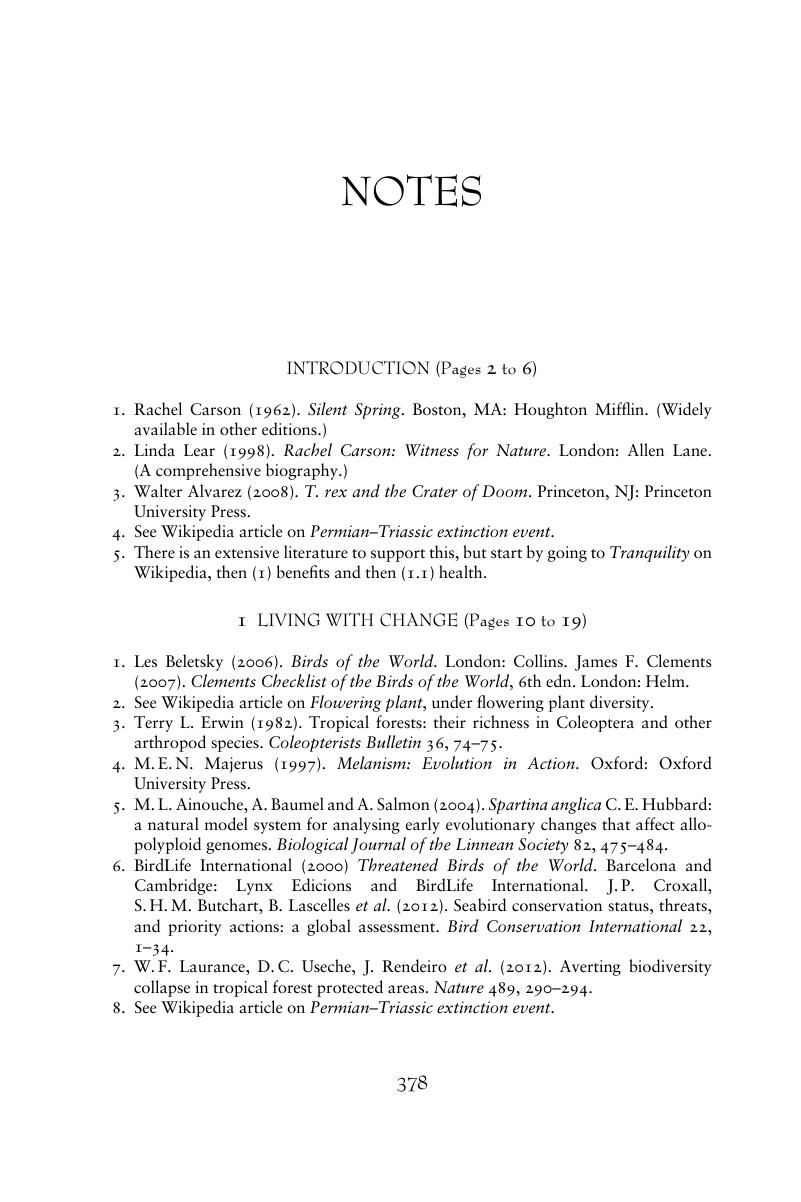Book contents
- Frontmatter
- Dedication
- Contents
- List of wood engraving illustrations
- Foreword
- Acknowledgements
- Introduction
- 1 Living with change
- 2 A short dose of Earth history
- 3 Climate change
- 4 Down on the farm and into the woods
- 5 Plant and animal introductions (and some recent arrivals)
- 6 Our overcrowded isles: human population and aspiration
- 7 Fresh water: quality and availability
- 8 Hunting, shooting and fishing: the enigma of field sports and wildlife
- 9 Wildlife conservation at home and overseas
- So how is our wildlife faring? The details
- Glossary and abbreviations
- Notes
- Index
- Plate section
- References
Notes
Published online by Cambridge University Press: 05 April 2015
- Frontmatter
- Dedication
- Contents
- List of wood engraving illustrations
- Foreword
- Acknowledgements
- Introduction
- 1 Living with change
- 2 A short dose of Earth history
- 3 Climate change
- 4 Down on the farm and into the woods
- 5 Plant and animal introductions (and some recent arrivals)
- 6 Our overcrowded isles: human population and aspiration
- 7 Fresh water: quality and availability
- 8 Hunting, shooting and fishing: the enigma of field sports and wildlife
- 9 Wildlife conservation at home and overseas
- So how is our wildlife faring? The details
- Glossary and abbreviations
- Notes
- Index
- Plate section
- References
Summary

- Type
- Chapter
- Information
- A Less Green and Pleasant LandOur Threatened Wildlife, pp. 378 - 390Publisher: Cambridge University PressPrint publication year: 2015



